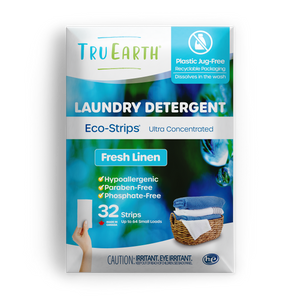To be human, is to be tasked with the chore of laundry. Luckily, the arrival of the first electric washing machines in the late 1930’s dramatically reduced the time we spend cleaning clothes. With the crank of a dial and push of a button, it can seem like magic; clothes enter soiled and emerge clean with zero effort required of the operator. That said, there are some best practices to follow. Here’s how to properly use a washing machine while avoiding common mistakes.
The basic steps of using a washing machine to do laundry:
- Sort your dirty clothing. First, separate whites from colours and remove delicate items, organizing them into some sort of bin system. If you’re unsure how a garment should be laundered, inspect the item for its care label. Click here for a guide to decoding laundry symbols.
- Load the drum. Take special care not to overload the washing machine. Clothing needs enough space to “agitate” and also to be rinsed. An overloaded machine will not clean, nor rinse, to its full potential. What's more, laundry that is not properly rinsed can leave a sudsy residue which actually attracts debris to the fabric. Large loads should only consume 75 per cent of the drum.
- Add laundry detergent. Tru Earth laundry detergent eco-strips take the mess out of measuring. Simply tear a square in half and toss into a full load. For half-loads, use half of one strip. Easy!
- Select the appropriate cycle. Modern day washing machines typically include the following cycles: normal, heavy duty, bedding/towels, quick wash, delicates, permanent press and rinse & spin. Wash settings differ in two ways and it all has to do with speed; the speed at which the machine agitates the clothing in soapy water, and the speed of the drum while spinning rinse water. How do you know which to choose? Refer to the garment care label to see which cycle will best protect the fabric type while ensuring a good clean.
- Adjust the water temperature, if needed. Some cycles allow for individual settings to be adjusted, like water temperature. Very soiled garments should be laundered at the highest temperature setting appropriate for the fabric type, in order to ensure the best possible clean. Hot water better sanitizes germs and combats odor. Some materials are fine in high heat (like towels and socks) while others do better with lower temperatures (like bamboo and silk) thanks to dye bleed and shrinkage. Dark colours, permanent press and normal loads can use warm water instead of hot, which saves on energy.
- Adjust other settings, if needed.
- Close the door and hit “start.”
What is the permanent press setting for?
Permanent press refers to a gentler wash cycle that can help reduce creasing in wrinkle-prone fabrics. (Some washers simply call it “wrinkle control.”) It works by washing (agitating) in warm water and spinning out at a lower speed to release wrinkles. Remember to unload the items promptly after the cycle finishes. Note: permanent press should not be used in lieu of the delicate cycle; use the delicate setting when fabric care labels call for it.
Common mistakes people make when using a washing machine:
- Waiting too long to unload laundry after the wash cycle is complete. Allowing wet laundry to sit for hours will often result in an odor that won’t go away even when dry, requiring an extra wash cycle – which is wasteful. It also contributes to the build-up of mildew and mould in the drum.
- Leaving the washing machine door closed when not in use. Keep it open to reduce mildew and mould build-up
- Using too much laundry detergent. Washing machines count on items to agitate one another during the wash cycle. Excess suds reduce the traction of those interactions, resulting in a less effective clean. What’s more, the sensors on today’s “smart” appliances are constantly reading water and sud levels. Too much soap may require an extra rinse, unnecessarily wasting gallons of water and adding to energy consumption.
- Forgetting to empty pockets. Failing to empty the contents of pockets can result in paper crumbs or globs of wet tissue. Worse yet, small hard items like coins can inflict damage on the appliance and fabrics.
-
Neglecting to maintain your washing machine. People often forget to clean the things that clean other things – like a washing machine. If your appliance has it, run the self-clean mode every so often to combat mould, mildew, lingering funk and soapy film.
How to select the right laundry detergent
Today’s high efficiency washing machines require appropriately formulated soap. Tru Earth laundry detergent eco-strips are HE-compatible, as indicated by the icon on its paper-based packaging. Formulation aside, Tru Earth is hypoallergenic, paraben-free and manufactured in Canada where it is subject to stringent health regulations. And with every load, you’ll be saving a plastic jug from the land fill.
Free Shipping*


